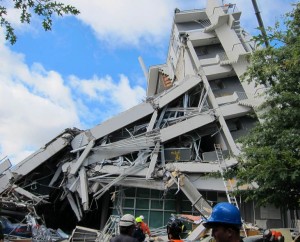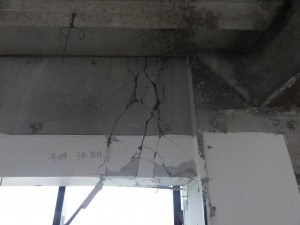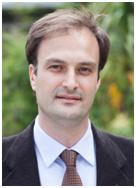Speaker: Stefano Pampanin
Affiliation: University of Canterbury & University of Roma
Reality check and renewed challenges in Earthquake Engineering:
Building Resilience through an integrated low-damage design approach
Overview
 The 2010-2011 Canterbury earthquake sequence has highlighted the severe mismatch between societal expectations over the reality of seismic performance of modern buildings.
The 2010-2011 Canterbury earthquake sequence has highlighted the severe mismatch between societal expectations over the reality of seismic performance of modern buildings.
A paradigm shift in performance-based design criteria and objectives towards damage-control or low-damage design philosophy and technologies is urgently required. The increased awareness by the general public, tenants, building owners, territorial authorities as well as (re)insurers, of the severe socio-economic impacts of moderate-strong earthquakes in terms of damage/dollars/downtime, has indeed stimulated and facilitated the wider acceptance and implementation of cost-efficient damage-control (or low-damage) technologies.
Building safer and more resilient communities is in fact being recognized as the overarching goal of risk reduction policies and practices. A damage-resistant or impact-resilient built environment, including structures and infrastructures, would represent a key step towards this goal. The ‘bar’ has thus been raised significantly with the request to fast-track the development of what the wider general public would hope, and somehow expect, to live in, i.e. an “earthquake-proof” building system, capable of sustaining the shaking of a severe earthquake basically unscathed.
This presentation will provide an overview of recent advances through extensive research, carried out at the University of Canterbury in the past fifteen years towards the development of a low-damage building system as a whole, within an integrated performance-based framework, including: the skeleton of the superstructure, the non-structural components and the interaction with the soil/foundation system.
Examples of real on site-applications of such technology in New Zealand, using concrete, timber (engineered wood), steel or a combination of these materials, and featuring some of the latest innovative technical solutions developed in the laboratory will be presented as comforting example of successful transfer of performance-based seismic design approach and advanced technology from theory to practice in line with the broader objective of Building Resilience.
Biography
 Stefano Pampanin is (Full) Professor of Structural Design & Earthquake Engineering in the Department of Civil and Natural Resources Engineering at the University of Canterbury, Christchurch, New Zealand where he joined in 2002 and, recently, in the Department of Structural and Geotechnical Enginering at the University of Roma, La Sapienza.
Stefano Pampanin is (Full) Professor of Structural Design & Earthquake Engineering in the Department of Civil and Natural Resources Engineering at the University of Canterbury, Christchurch, New Zealand where he joined in 2002 and, recently, in the Department of Structural and Geotechnical Enginering at the University of Roma, La Sapienza.
He was the President of the New Zealand Society for Earthquake Engineering (NZSEE) in 2012-2014 and has been elected
Fellow of the Institute of Professional Engineers in New Zealand (IPENZ) in 2015.
In the past 20 years he has been dedicating a significant effort in the research and development, codification and practical implementation, as well as knowledge-dissemination, of innovative solutions for the seismic design of low-damage structural systems in concrete and timber, as well as for the seismic assessment and retrofit of existing structures. He is author of more than 350 scientific publications in the field of structural/ earthquake engineering and has been an active member of several national and international code/standard/guidelines committees.
He is a Chartered Professional Engineer (CPEng) in Italy and New Zealand and has acted as external consultant and peer reviewer for the actual implementation of several damage-resisting solutions based on jointed ductile connections in reinforced/precast concrete (PRESSS-technology) buildings and in post-tensioned laminated timber (Pres-Lam) buildings, which received a number of design/innovation awards.
Following the 22 February 2011 earthquake in Christchurch, Prof. Pampanin has played active roles in a range of recovery and post-earthquake investigation activities, as a PI of recovery-focussed research projects, member of an Expert Panel reporting to the Canterbury Earthtquake Royal Commission, Member of the Engineering Reference Group and Advisor to the Ministy of Business Innovation and lEmployment (formal Department of Building and Housing)
Date/Time:
Date(s) - Jul 16, 2015
10:30 am - 11:30 am
Location:
Boelter Hall 4275
4275 Boelter Hall Los Angeles CA 90095
